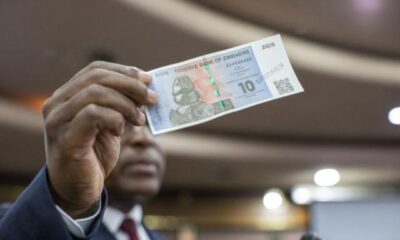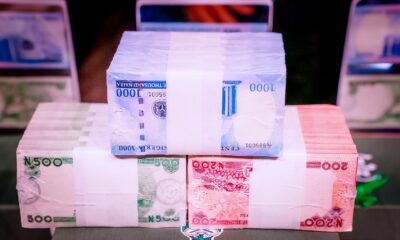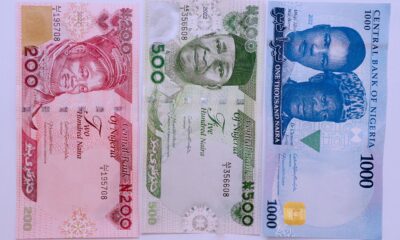With Hong Kong and Australia closed today, along with the UK this afternoon, and a number of secondary locations, it is hardly a surprise that Asian markets are quiet today. The weekend headline newsreel was relatively quiet. Omicron cases are surging in the US and Europe, and although markets have well and truly priced in a less virulent strain, the disruption to goods and services from isolating workers, notably air travel, seems to be the main fallout so far. That is only likely to cause short-term nerves, with the global recovery story for 2022 still on track. The divergence between Brent and WTI this morning can likely be laid at that door.
In China, Industrial Profits rose by a healthy 38% (YTD) YoY Nov versus 42% for October, but well above the forecast 34%. Uncertainty in the property sector continued to be a drag in otherwise broadly strong data sector-wise. On that note, the PBOC on Saturday said that they would safeguard the legal rights of home buyers and provide greater support for the real economy. The targeted stimulus is a theme in recent times from China, as opposed to previous Stimulus strategies. Reuters also reported that Evergrande had made progress restarting home construction and that its Chairman said it would deliver 39,000 units in December. That batch of positive news, though, is being offset by increasing omicron cases in China, leaving markets in a holding pattern.
The data calendar globally, is unsurprisingly, fairly thin this week, especially for tier-1 releases. Headlines will continue to dominate intraday moves in thin trading. For Asia, the highlight will be on Friday when China releases official Manufacturing and Non-Manufacturing PMIs. The recent fall in industrial commodity prices should boost Manufacturing, while Non0-Manufacturing looks vulnerable to downside risks around consumer sentiment and virus restrictions.
Otherwise, experience tells me this week will be a feast or a famine, with little in between. Either the headline reel will spur ugly intraday moves on holiday-thinned liquidity, or volatility will remain so flatline, that if it were an ECG, the doctors and nurses would be yelling code blue. In the meantime, pondering how to make the best use of Christmas leftover food may be a more productive course of action.
On one final note, I would like to acknowledge the passing of Arch Bishop Desmond Tutu over the weekend. I had the privilege of spending a couple of hours with him as part of my MBA in Cape Town in 2014. A formidable intellect, a kind heart, a patriotic South African and a great sense of humour was my overriding impression. I know this as he made me stand in the corner facing a wall for a while for being a Kiwi, as penance for the All Blacks beating the Springboks in rugby. He gave his heart to try to heal South Africa and gave more to society as a whole than he ever took. We need more people like him in the world. R.I.P Archbishop Tutu, it has been an honour.
Asian equities hover between slightly mixed and unchanged.
Asian equities are off to a quiet start this week, with little in the way of concrete drivers from the weekend to drive price action, Australia, New Zealand, and Hong Kong markets closed, as well as the UK this afternoon. With volumes holiday-thinned, the Nikkei 225 is 0.25% lower, while the Kospi is down 0.10%.
Mainland China is slightly in the green after positive headlines from Evergrande and the PBOC over the weekend, which is being tempered by rising virus cases. The Shanghai Composite is 0.18% higher, and the CSI 300 has eked out a 0.05% gain.
Regionally, Singapore is unchanged while Kuala Lumpur has gained 0.65% and Bangkok 0.20%. Taipei is 0.86% higher, with Manila down 0.10% and Jakarta up 0,15%. US futures have restarted trading today and are having a quiet session as well. Nasdaq futures gained 0.25%, S&P 500 futures 0.10%, while Dow futures are unchanged. It looks like only bored Minnesota dentists are playing in the space today.
Short of a headline surprise, I expect Europe to follow much the same pattern this afternoon.
US Dollar trades sideways.
Currency markets are in holiday mode and will likely remain so until the middle of next week. The dollar index barely changed from Friday at 96.11, marking three days of sideways trading. If anything, the US Dollar looks vulnerable to positive headlines still on the virus front this week with support between 95.80 and 95.85 the important level to monitor. Liquidity is further reduced in Asia due to several regional centre holidays.
Major currencies continue to tread water with EUR/USD at 1.1320, GBP/USD at 1.3410, USD/JPY at 114.40, AUD/USD at 0.7235, NZD/USD at 0.6820 and USD/CAD at 1.2810. None of that has been much different since last Thursday. The return of US markets this afternoon and the gnomes of Wall Street should see volatility pick up slightly this evening.
Asian currencies continue range trading as the Asian interbank market looks to have closed shop for the year now. A stronger Yuan continues to backstop Asian FX from negative sentiment shifts.
USD/TRY fell by nearly 6.0% on Friday as intervention and the central government’s effective Lira value guarantee on deposits for retail savers continues to play out. USD/TRY has risen by 3.50% today though and USD/TRY looks to be forming a base ahead of 10.0000 now. The authorities in Turkey may find engineering further Lira rallies harder going from here, and I will be watching their foreign reserve data going forward for more signals of when to re-enter the short Erdogan trade.
Brent crude and WTI stage rare divergence.
Oil prices traded sideways on low liquidity and participation on Friday, Brent crude easing slightly to $75.90 a barrel, and WTI easing to $73.20 a barrel. In Asia today, however, we are seeing a rare divergence in pricing direction. Brent crude has risen 0.70% to $76.40, while WTI has fallen by 0.65% to $73.20 a barrel.
I believe two different stories are in play here to explain the price action. CNN reported over the weekend, based on satellite photos, that Saudi Arabia is manufacturing ballistic missiles with Chinese assistance just outside of Riyad. An escalating arms race between Saudi Arabia and Iran is as good a reason to buy Brent crude as any.
In the US, hundreds of flights have been cancelled over the weekend due to staff shortages as airlines employees are forced to isolate themselves due to Covid-19 infection, notably omicron. Lower travel equalling lower economic activity in the US equals lower WTI, the US oil benchmark. Momentum is muted though, and I doubt either story will have a lasting impact on oil prices.
Brent crude has resistance at 77.05 a barrel, its 100-day moving average (DMA). It has support at $75.70. WTI has resistance at $74.10, its 100-DMA, and support at $72.30 a barrel.
Holiday risk-hedging lifts gold.
Pre-holidays risk-hedging appears to have lifted gold higher on Friday, rising 0.27% to $1808.50 an ounce. In Asia, volumes are muted, with gold edging another 0.13% higher to $1810.80.
Gold’s attempts to stage a meaningful recovery remain unconvincing, with traders cutting long positions at the very first sign of trouble intra-day. It faces a double top around the $1815.00 region which will present a formidable barrier, ahead of $1840.00. Support lies at $1790.00, followed by $1780.00 an ounce. $1790.00 to $1815.00 continues to be my call for the range for the week.
With the US Dollar looking more vulnerable to positive virus sentiment at the moment, gold could potentially move higher throughout this week, but I wouldn’t put my house on it sustaining those gains.





























